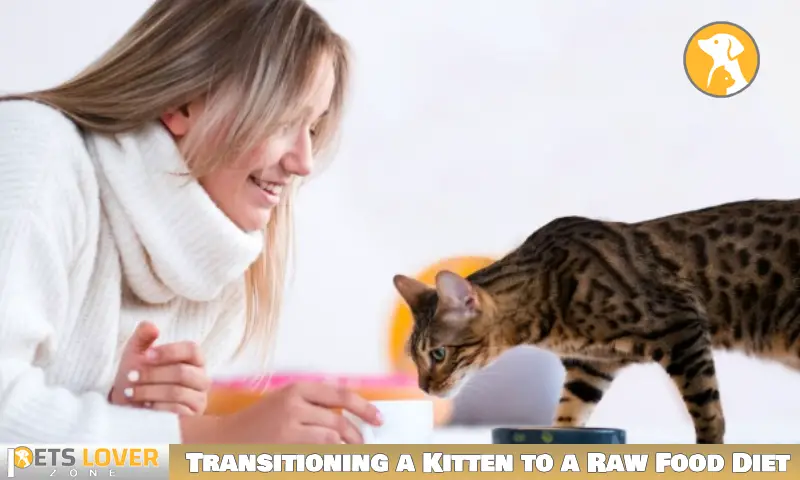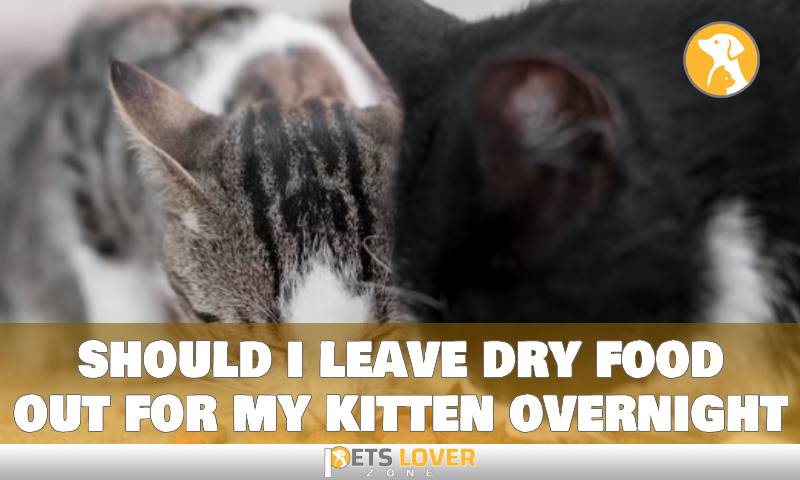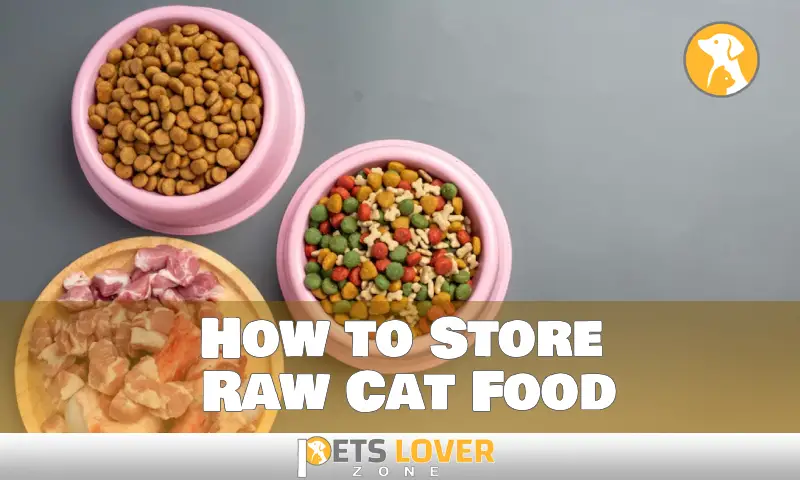Feeding your kitten a proper diet of raw food is essential for its growth and development. But knowing precisely how much raw food to feed your kitten can be a difficult task.
Raw diets for kittens can vary depending on their age, weight, and activity level. The amount of raw food that should be given to your kitten also needs to be adjusted as it grows older and its nutritional needs change.
This article is here to help you understand exactly the right amount of raw food you should feed your kitten on a daily basis. We’ll break down the different stages of growth and activity levels so that you have all the information needed to make sure that your kitten is getting the nutrition they need.
We’ll also discuss some other important factors, such as portion size and frequency, so you have all the information at hand when it comes time to feed your furry friend.
Why Raw Food Is Best for Kitten Growth
When it comes to giving your kitten the best start in life, raw food is a must-have. Raw food provides essential nutritional value for proper brain and musculoskeletal development.
It doesn’t just contain animal proteins and fats like omega 3 either; raw food also provides all the necessary vitamins and minerals needed for healthy growth. The ground bone content of the food ensures a balanced mineral presence, while the meat supplies crucial vitamins and minerals that kittens need to stay active, healthy, and alert.
Additionally, because the raw food has already been partially digested by the natural enzymes found in the ingredients, it is easier for kittens to digest than canned or dry food. This means your kitten will be able to absorb more nutrients from the same amount of food, ensuring that they get all the nutrients necessary to grow big and strong!
Determining Your Kitten’s Ideal Weight

Your kitten’s weight can tell you a lot about her health and diet. If she’s too thin or too heavy, it’s likely that your diet isn’t providing the right balance of nutrients that she needs.
When it comes to determining how much raw food to feed your kitten, a guideline is to give her one ounce of raw food for every pound she weighs per day. That means that a 2-month-old kitten should weigh approximately 2 pounds and consume two ounces of raw food per day. A 10-week-old kitten weighs on average about 1100 grams and should get 1/2 pound, or 8 ounces, of food per day. As your kitten grows, so should her portion size, and by the time she’s four months old, she should weigh between 1.8 and 2.3 kilograms and take in between 3/4 and 1 pound of raw food per day.
Remember that these guidelines are just a starting point for determining the proper amount of raw food for your kitten—you’ll need to monitor her weight gain over time to make sure you’re accurately meeting her nutritional needs as she grows.
Factors That Affect How Much to Feed a Kitten
Monitoring your kitten’s growth can be tricky, but there are some factors that you should consider when deciding how much to feed them.
Age and Weight
Kittens should gain approximately half to three-fourths of an ounce (15-20 grams) each day, with smaller breeds requiring less than larger breeds. Kittens also have different nutritional needs than adults or senior cats and therefore require far less energy for growth than an older cat.
Activity Level
Active kittens will require more food than those that are less active. Therefore, be sure to adjust your daily food intake accordingly.
Weaning Process
Mother cats wean their kittens off milk at a certain age, typically between five and eight weeks old. At this point, the kittens should begin to eat solid food as their primary source of nutrition. Ensure that you provide small pieces of raw food for them to easily chew and digest until they become more accustomed to eating solid foods.
Typical Feeding Portions for Kittens by Age
Feeding a kitten the right amount of food is essential for their growth, development, and overall health. The amount of food you feed your little one will depend on their age, so it’s important to be aware of how much they should be eating.
Generally, kittens should gain between half and three-fourths of an ounce (15-20 grams) each day. Here are the typical feeding portions for kittens by age:
- Kittens 5-19 weeks of age should be fed 1/2 cup per kilogram (1 oz per pound) of body weight.
- Kittens 3-4 months of age should be fed 1/3 cup per kilogram (2/3 oz per pound) of body weight.
- Kittens 5-6 months of age should be fed 1/4 cup per kilogram (1/2 oz per pound) of body weight.
- Baby kittens can nurse liquid kitten formula at a rate of 2 tablespoons (30 ml) per 4 ounces (113 gm) of body weight for each meal.
Keeping your kitten on this schedule and feeding them the right amounts will help them grow strong, healthy, and happy!
Monitoring Your Kitten’s Growth and Adjusting Portions
The key to planning your kitten’s raw food intake is to monitor its growth and adjust portions accordingly. To track your kitten’s growth, there are growth charts available to measure its progress from 8 weeks to adulthood. As your kitten matures to adulthood at 10-12 months, you should transition from kitten food and portions to adult food and adult portions, respectively.
The amount of food also depends on several factors, such as activity level, age, size, health status, and breed of cat. Generally speaking, kittens need more protein than an adult cat does for proper growth and development. Some reputable raw pet food brands provide guidelines on the recommended daily amount of raw food for kittens according to their individual physical characteristics. In addition, always consult with a pet nutritionist or vet for specific advice about your pet’s diet.
By following these guidelines, you can ensure that your growing kitten receives the correct amounts of raw food necessary for optimal development and health.
Tips for Transitioning a Kitten to a Raw Food Diet
When transitioning to a raw food diet, it’s important that the process be done gradually and with care. You’ll want to start by mixing 25% raw food with 75% of the kitten’s normal diet, gradually increasing the proportion of raw food over time until your pet is used to the new diet.
When introducing new foods, take it slow and don’t introduce too many different flavors all at once. It’s best to introduce one new food at a time, monitoring your kitten’s reaction and appetite before introducing another.
It’s also a good idea to monitor your kitten daily for signs that their diet is not agreeing with them. Changes in stool consistency or vomiting can be signs that either too much or too little raw food is being served; if this happens, you may need to adjust how much you’re feeding your kitten accordingly.
How Much Raw Food for Large Breed Kittens?
Large breed kittens should be fed different amounts than their smaller counterparts. They generally require higher amounts of protein, fat, and vitamins for optimum growth and development.
So how much raw food should you feed a large breed kitten? That depends on the kitten’s age, but as a general rule, large breed kittens need to consume between 6-13% of their body weight daily in order to reach their full potential.
From 2-3 months old, the larger they are, the more they can eat – up to 10-13% of their body weight per day. Later in life, from 4-8 months old, you can dial it back just a bit – 6-10% of body weight daily is enough for them to keep growing strong.
If you’re ever concerned about your kitten’s growth and development, consult with your vet for professional advice tailored to your cat’s specific needs.
Weighing Your Raw Fed Kitten Regularly
Monitoring your kitten’s weight is essential to understanding their growth and deciding the proper amount of raw food to feed them. Weighing your kitten regularly helps you control their caloric intake, ensuring they get the right amount of nutrients necessary for healthy growth.
Every day, feed your kitten 2-3% of their body weight in raw food, or 4-6% if they are still growing. As a rule of thumb, kittens should gain 4-5 grams per day, so weigh your kitten every week or two and adjust the amount of food if needed.
It’s important to pay attention to the physical characteristics of your kitten as well. If they seem lethargic or overly skinny, increase the portion size; if they seem overweight and sluggish, reduce it slightly. With regular weighing and adjustments to food quantity, you can help ensure that your cat grows up strong and healthy!
Signs Your Kitten May Need More or Less Food
It’s important to monitor your kitten’s food intake so that it doesn’t become overfed or underfed. If you feel like your kitten is not growing properly, it might be because it isn’t receiving enough nutrients from its food.
Here are a few signs that could indicate that your kitten may need more or less food:
- Lethargy, weakness, decreased or lack of appetite, less interest in playing, sleeping more, and vomiting can all be signs of a sick kitten. If your kitten appears to be experiencing any of these symptoms and isn’t eating properly, you should take it to the vet as soon as possible.
- Puppies and kittens that are growing require pet foods with a higher protein level and a higher calorie count. If you notice your kitten is losing weight despite having an appetite, the likely cause is insufficient protein intake. Consider switching up your diet to one with higher-quality ingredients or larger portion sizes so that your pet can get the nutrition it needs to grow healthy.
- Weight loss in cats could be a warning sign of GI problems – check with your vet if this happens. On the other hand, if you find that your cat has become overweight despite maintaining an appropriate diet, try reducing portion sizes or adding more exercises to its routine to help it (safely!) shed those extra pounds.
Transitioning a Kitten to a Raw Food Diet

Transitioning a kitten to a raw food diet can be done gradually to minimize digestive stress. Start by introducing a small bowl of raw food next to their current bowl. Do this twice a day, and increase the size of the raw food portion over time. After a week, you can begin mixing 1/4 of raw food into 3/4 of their current meal. Eventually, after around 3 months, the kitten should be able to transition fully to the raw food diet.
Kittens are much more sensitive than adult cats when it comes to transitioning to a new diet because of their weaker digestive systems. For this reason, it is important to slowly increase their intake of raw food and carefully monitor their health as they adjust.
Conclusion
All in all, it’s important to properly measure how much raw food to feed kittens for proper growth and development. With an appropriate and balanced diet, proper exercise, and plenty of love and affection, your kitten can grow up healthy and strong.
A good rule of thumb is to feed your kitten the same amount of raw food as their weight in ounces, divided into four meals during the day. Adjust the amount of food according to energy levels, growth rate, and body composition. It’s also important to ensure the food is of the highest quality; opt for organic, grass-fed, and free-range raw food when possible. With the appropriate diet, your kitten can thrive and live a long and healthy life.





